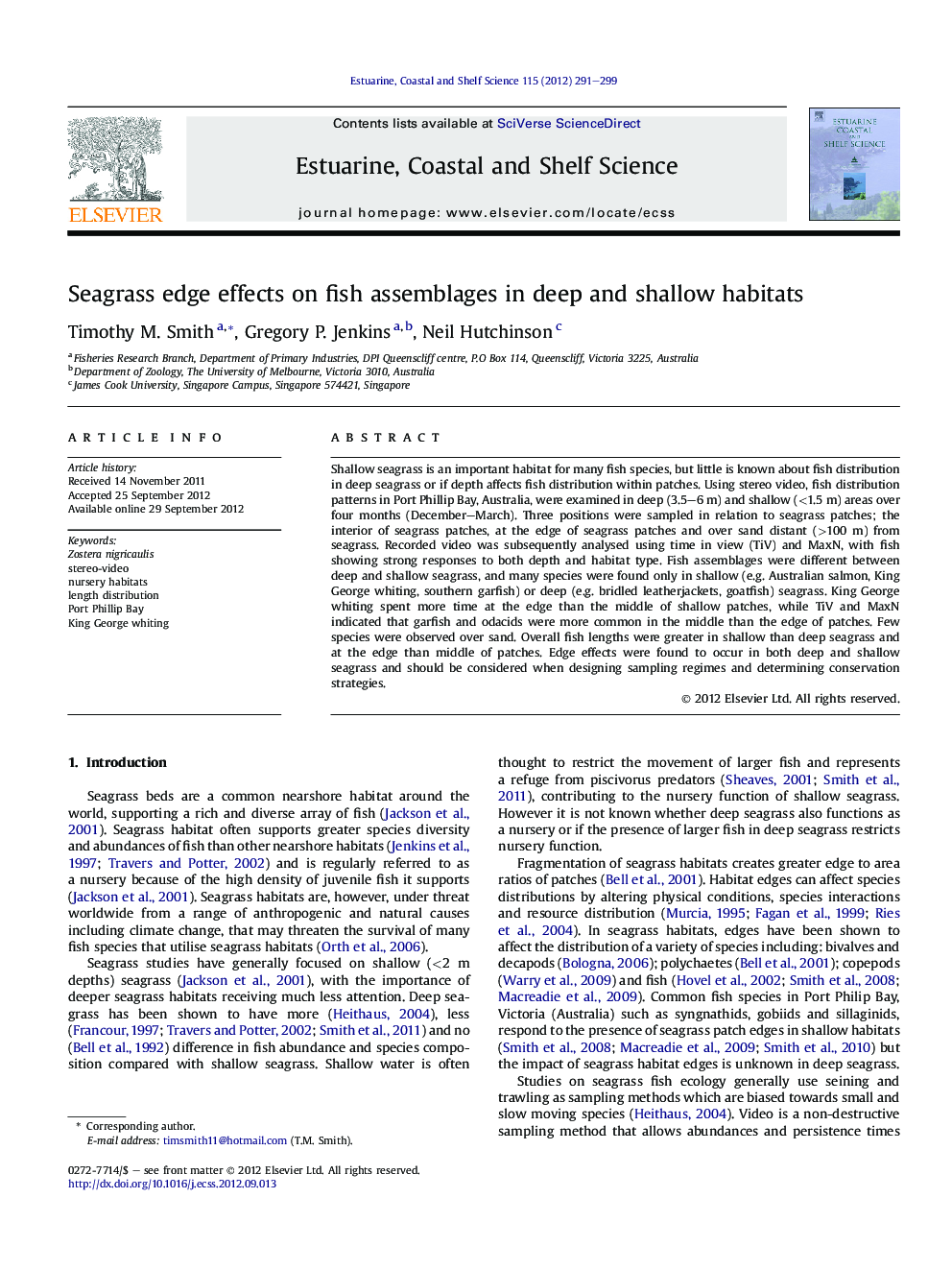| Article ID | Journal | Published Year | Pages | File Type |
|---|---|---|---|---|
| 4540155 | Estuarine, Coastal and Shelf Science | 2012 | 9 Pages |
Shallow seagrass is an important habitat for many fish species, but little is known about fish distribution in deep seagrass or if depth affects fish distribution within patches. Using stereo video, fish distribution patterns in Port Phillip Bay, Australia, were examined in deep (3.5–6 m) and shallow (<1.5 m) areas over four months (December–March). Three positions were sampled in relation to seagrass patches; the interior of seagrass patches, at the edge of seagrass patches and over sand distant (>100 m) from seagrass. Recorded video was subsequently analysed using time in view (TiV) and MaxN, with fish showing strong responses to both depth and habitat type. Fish assemblages were different between deep and shallow seagrass, and many species were found only in shallow (e.g. Australian salmon, King George whiting, southern garfish) or deep (e.g. bridled leatherjackets, goatfish) seagrass. King George whiting spent more time at the edge than the middle of shallow patches, while TiV and MaxN indicated that garfish and odacids were more common in the middle than the edge of patches. Few species were observed over sand. Overall fish lengths were greater in shallow than deep seagrass and at the edge than middle of patches. Edge effects were found to occur in both deep and shallow seagrass and should be considered when designing sampling regimes and determining conservation strategies.
